You have followed every single detail of your pizza recipe, mixed all ingredients in the right proportions, but when you start working on the dough, you notice it’s too sticky. And the first question that comes to your mind is, why is my pizza dough so sticky?

Well, there are several things that can make pizza dough sticky. The most common ones are excess hydration, too little kneading, using cold water, and environmental factors.
Luckily, there are a few things you can do to fix your sticky dough. Read on!
How Sticky Should Your Pizza Dough Be?
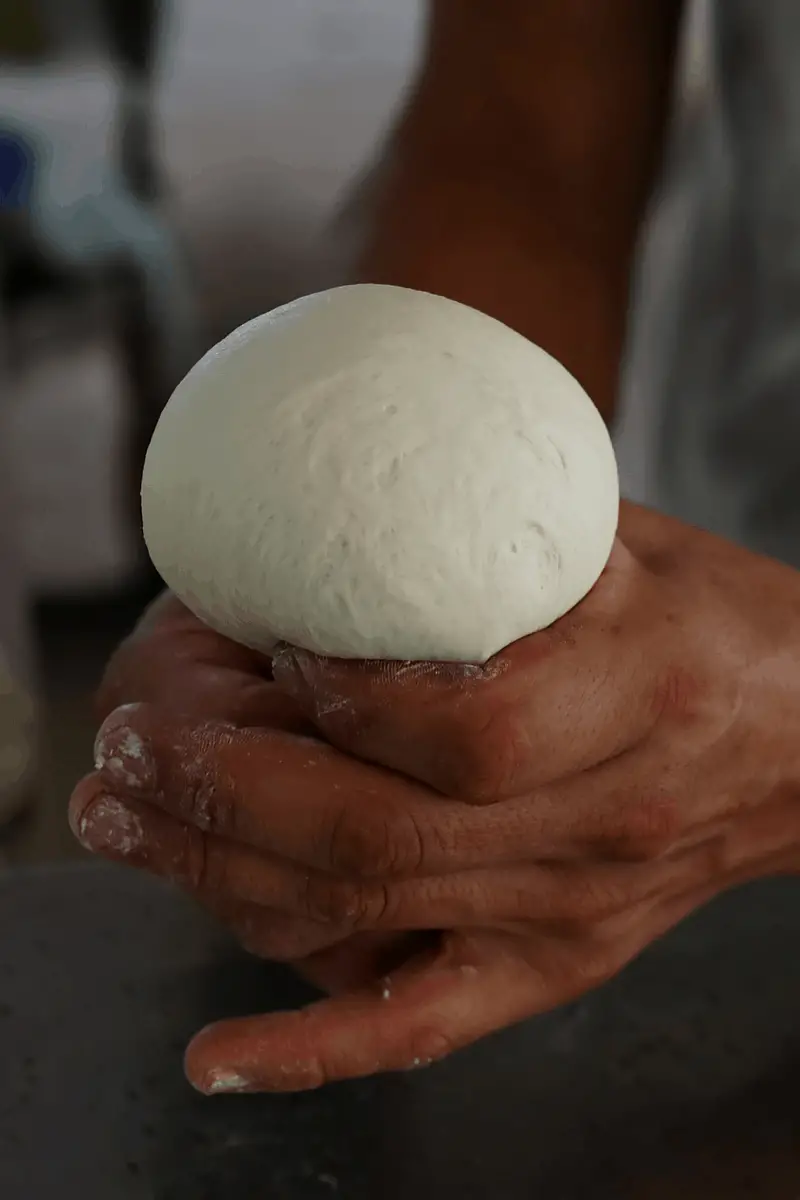
Before we discuss in detail some of the reasons that make pizza dough extra sticky and how to solve this problem, let’s first understand how good pizza dough should look or feel like.
Now, when you just start preparing your pizza dough, the dough is usually very wet and sticky before the ingredients mix well together. Over time, it absorbs the water and becomes less sticky.
How sticky your pizza dough should be will depend on how comfortably you can handle the wet dough. A stickier dough, however, has been found to produce better crusts. The excess steam produced when baking the pizza helps loosen up the crust, resulting in lighter, crispier pizzas.
But this much stickiness also means that handling the dough will be more difficult. You need to find out what works for you. Hydration of 66%, for instance, would be a great place to start.
But remember, different baking flours come with different water-handling abilities. So the most effective way to go about it is to try different variations and stick to the one that works best for you.
Reasons Your Pizza Dough Is Extra Sticky
1. Too Much Hydration
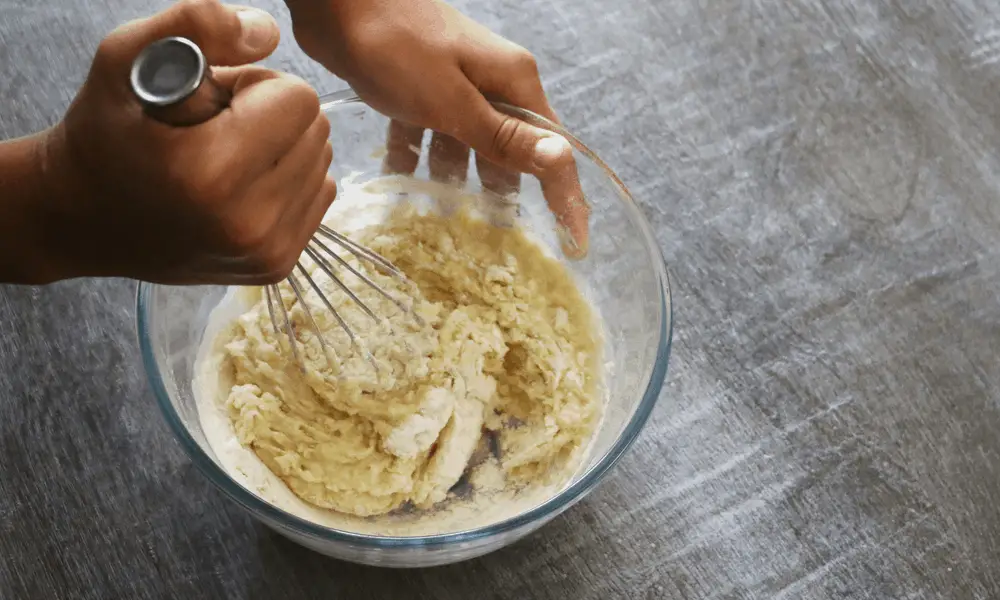
The number one reason for pizza dough stickiness is high hydration, which means there is too much water in the dough. Dough hydration is expressed as a percentage of the total amount of flour. 80% hydration, for example, could mean that there are 800 grams of water in 1000 grams of flour.
Generally, the higher this percentage is, the wetter and stickier the dough will be. Simply put, the more water the dough has, the stickier it will be. Of course, factors like how much water your type of flour can absorb also play a role in determining the dough’s stickiness.
Always aim for hydration of about 66%, as we mentioned earlier. If you go higher than this, your dough will start getting wetter and less manageable. Here is a video on how to calculate pizza dough hydration and basic baker percentages.
2. Too Little Kneading
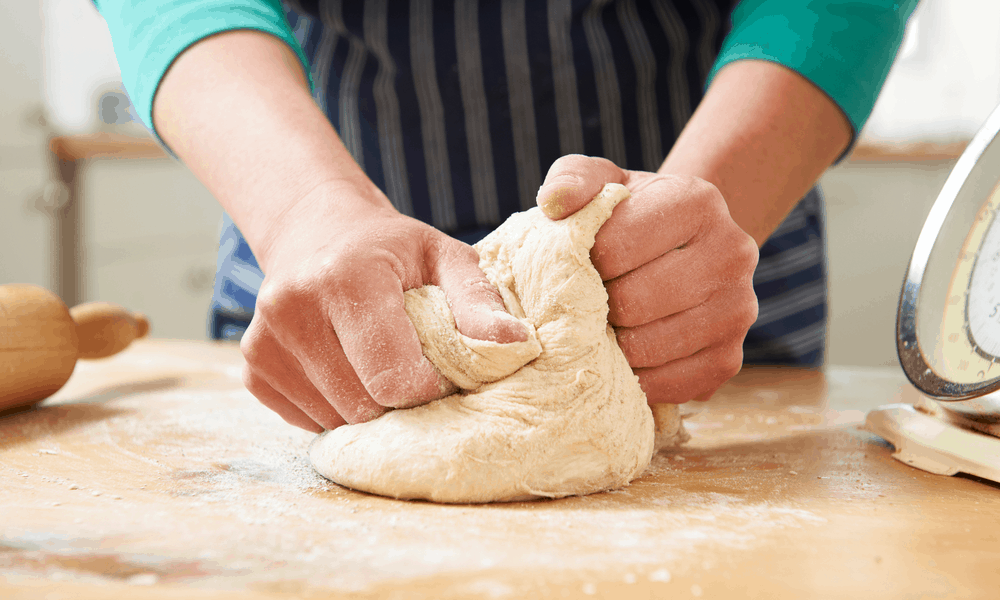
Another common reason you may end up with sticky pizza dough is not pounding your dough enough. When you knead the dough, gluten is developed, making the dough less sticky.
Kneading can take anywhere between 15 and 25 minutes. But the longer you do it, the more you are able to reduce the stickiness.
Gluten is an important protein in baking, as without it, rolling and stretching your dough can be close to impossible.
For proper gluten formation, it is important that you pick a flour that has high gluten content. Without enough gluten, the dough will become compact and will break every time you try to stretch it.
Pounding dough for an extended period of time allows the gluten to create networks that strengthen and stretch the dough more. As soon as you stop kneading, these networks become inactive.
3. Using Cold Water
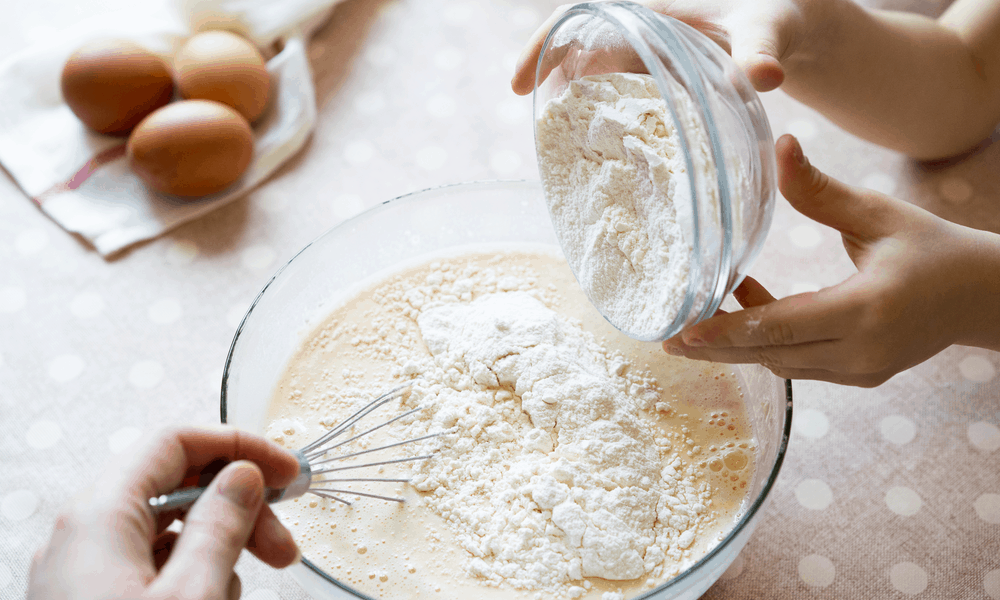
Cold water is not good for dough processing. Cold water prevents gluten from developing properly, leaving the dough sticky and difficult to work with.
4. Environmental Factors
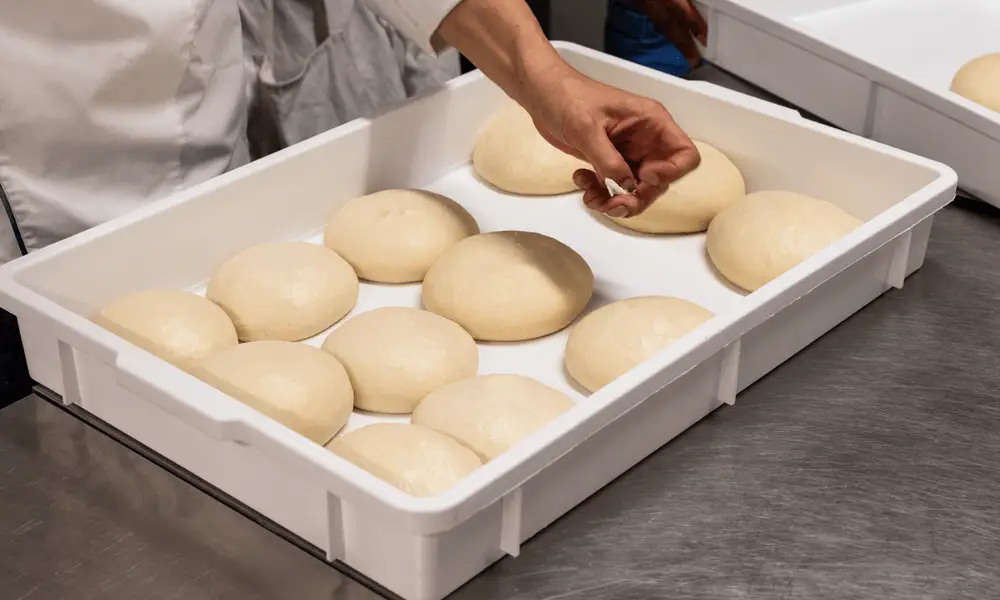
If you live in an area that experiences high humidity, the high content of moisture in the air will be absorbed by the dough and it may be difficult to keep the dough in the elasticity required to produce your desired results.
What this simply means is that pizza dough made in a dry environment will end up being different from dough made in a humid environment in terms of hydration. In humid areas, the dough will tend to be a little stickier than in dry areas.
What To Do When the Pizza Dough Is too Sticky
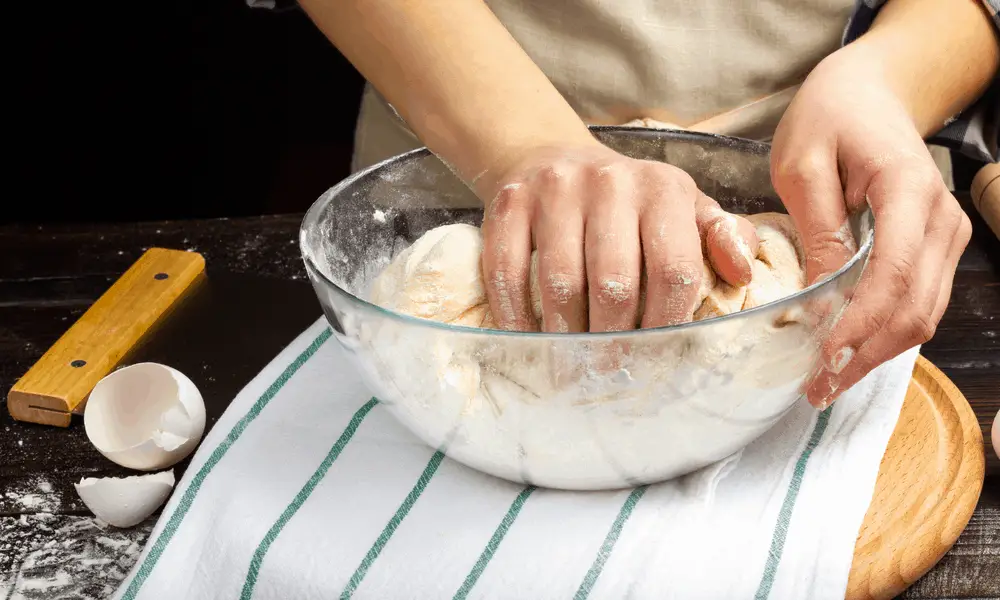
Add Flour
Depending on the reason your dough is sticky, you may want to try a few tricks to get rid of the stickiness. In most instances, pizza dough gets sticky because the water content is higher than the flour content. So adding flour will help harden the dough.
Do not overdo it, though. Go slow, adding a pinch of flour at a time. As you do this, knead the dough thoroughly to make sure everything is mixing properly.
Keep adding the flour until the dough stops sticking both to your hands and the kneading surface. If the stickiness was caused by high water content, this should be able to solve the problem.
Keep Kneading
If you haven’t mixed your pizza dough well or long enough, you will need to do so to activate the gluten protein and reduce the stickiness. With continued pounding, the dough will become smooth and springy and will not stick to your hands any longer.
Use Less Water in Humid Conditions
If you are preparing your dough in a humid environment, consider using less water than what is specified in your chosen recipe. Add the water a few spoons at a time until you achieve your preferred consistency.
The secret to obtaining tighter dough in a humid area is going slowly. Don’t add plenty of water in one go as this may raise the hydration to a level that may be difficult to bring down.
Use Warm Water
Always make sure you are using warm water when making pizza dough. It will help keep the gluten protein intact to prevent stickiness. Warm water will also activate and hydrate the yeast. When yeast is hydrated properly, it becomes active, allowing the gluten to develop and hold the ingredients together.
If you have used cold water from the word go, you may need to make your dough all over again. Adding flour may not get you the consistency your dough needs to hold everything together, and even if by good luck it does, the resulting pizza will likely be hard and chewy.
How Do You Handle Sticky Pizza Dough?
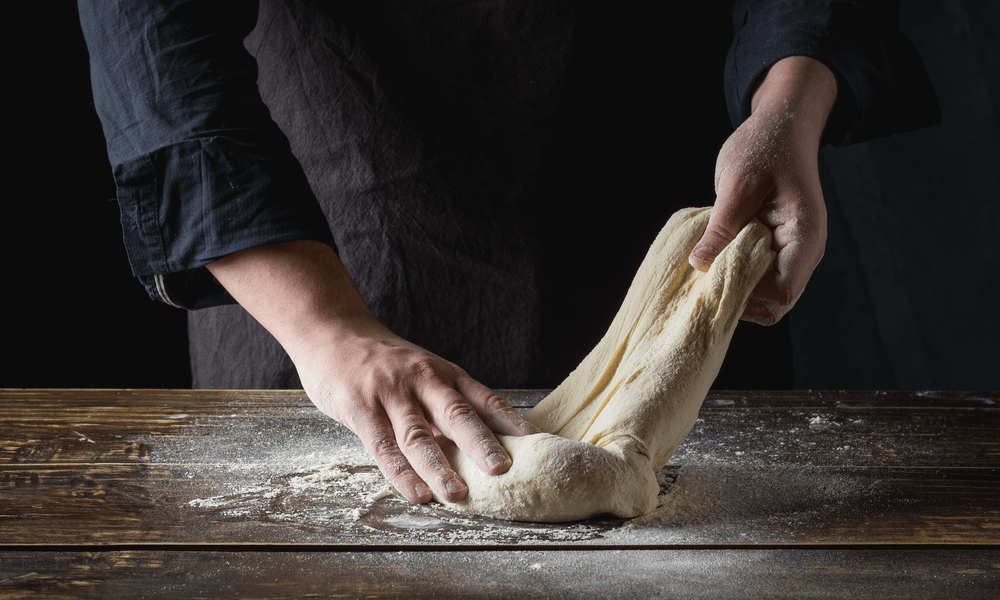
While sticky pizza dough may give you a hard time making crusts out of it, it undoubtedly produces the softest and fluffiest pizzas.
So, let’s say you still want to use your sticky dough as is. How do you handle it to make sure it doesn’t stick to your hands?
It’s simple; use a dough scraper.
A dough scraper gives you a sturdy edge so you can work your dough quickly without worrying about it sticking to your hands or work surface.
To get the best results, however, make sure the bowl you are using to mix the dough is oiled. Apply a thin layer of oil on the dough itself too. Dust some flour on the worktop as well or just smear some oil. It will help with the sticking.
If the dough is too sticky to pound, you may need to think outside the box and try other strategies. One of the most effective tactics here would be the ‘pincer’ method. Ideally, you will be using your thumb and index finger to pinch and cut through the dough.
The pincer method will help you get to the center of the dough easily so you can mix in all the flour. You can dip your hand in a bowl of water first; it will keep the dough from sticking to the hand.
Another technique you could use to work your sticky dough is the ‘stretch and fold’ method. For this technique, you will use your fingertips and the heel of your hand.
Simply grab an edge of the dough and pull it away from you. Then bring it to the center of the dough and use the heel of your hand to press it in. Do not touch the dough with your palms or you will get the dough sticking to your hands.
Repeat this a couple of times, rotating the dough as you go. After you have made several folds, use a scraper to pick up the dough from the worktop. Spray a little oil on it and repeat.
The continued stretching and folding help develop gluten, and the dough actually gets a little tighter and more manageable.
The Takeaway
There are many reasons your pizza dough may end up being stickier than you initially intended. It could be that you added too much water, you haven’t kneaded the dough enough, you used cold water, or your kitchen is just humid.
Adding flour to the dough can help reduce the stickiness. To prevent this from happening again, however, make sure you are using warm water and the right amount of it and the dough is mixed properly.
Have you had trouble with sticky pizza dough? Tell us below what you did to make it tighter.
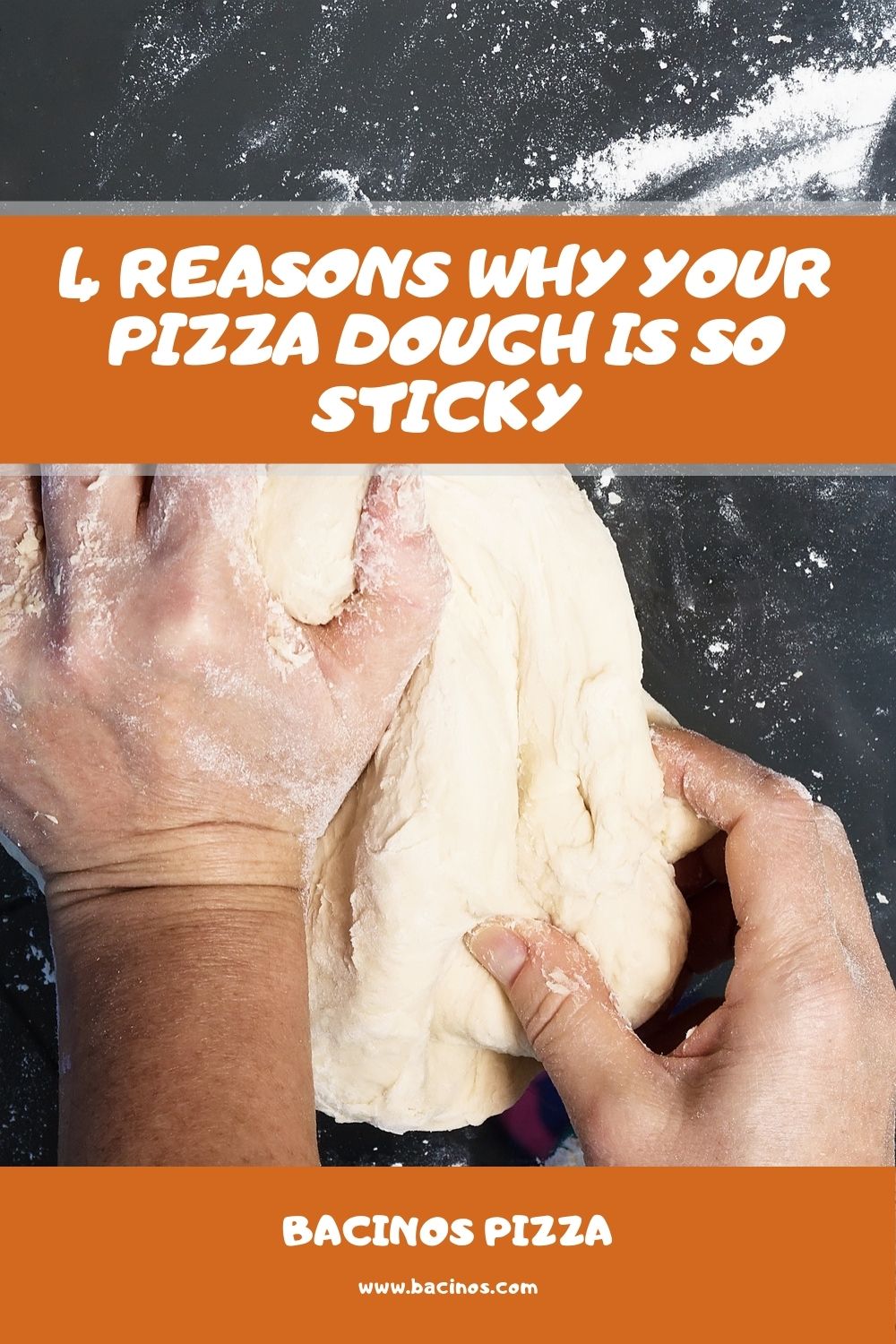

Barbara is an enthusiastic food-exploring person that goes through different culinary experiences. She got inspired by creating a pizza blog post after she tasted one of the best-selling pizzas in Toledo.